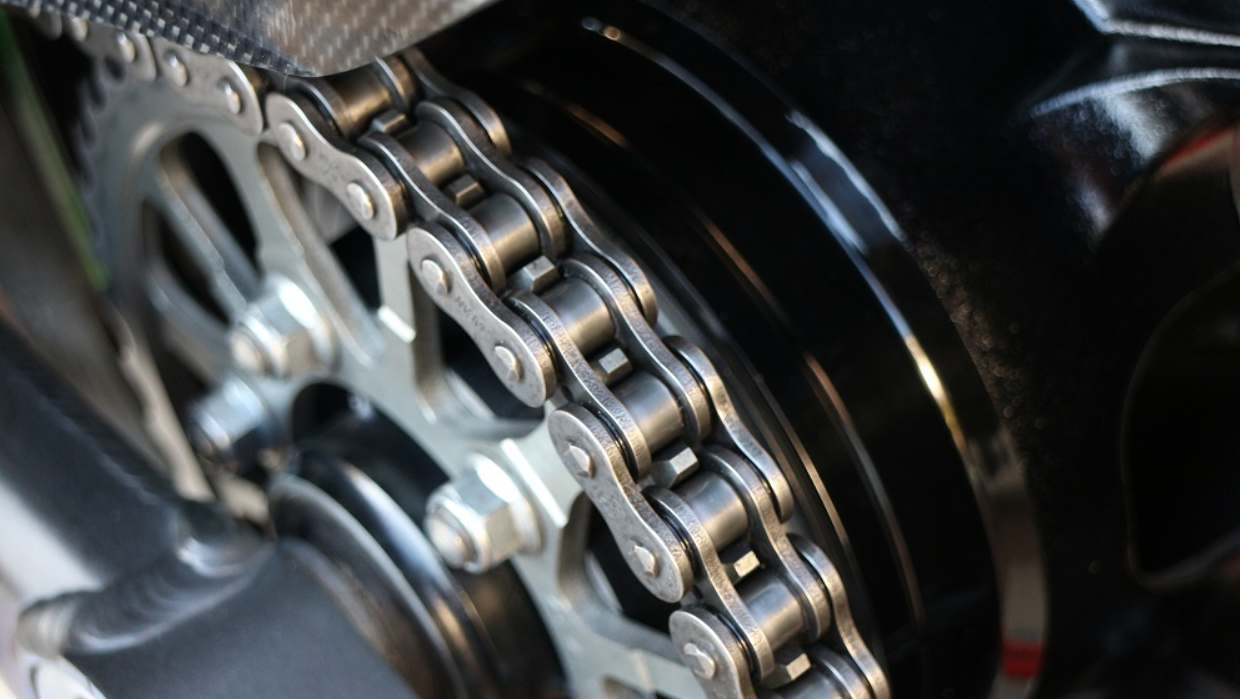Come here to learn more about the detailed data of the sprocket

Sprockets are highly specialized parts that are fabricated to precisely fit with specific chains and handle specific loads.
Specifications for Sprockets
Sprockets are often made from metal or reinforced plastics that can withstand the force of moving the chain. These components are often compared to gears, which share a similar wheel-shaped design with teeth. Unlike gears—which interlock together to transfer rotational movement— sprockets only directly interact with different types of chains.
Sprockets need to meet tight specifications regarding factors such as:
- Size
- Dimensions
- Diameter
- Teeth width and depth
The sprocket assembly consists of two main components: the sprocket and the chain. If these two parts cannot complement each other, the system will not function properly. When choosing to replace sprockets or design new sprockets and chain components, multiple factors need to be kept in mind, such as:
PITCH DIAMETER
For the Chain: Pitch refers to the measurement of a chain from roller-pin center to roller-pin center, which is similar to measuring the distance between interlinking points on a chain.
For the Sprocket: Sprocket diameters are measured three ways:
*Bottom diameter, or the diameter from the lowest points between the teeth on sprockets with even numbers of teeth
*Outside diameter, which measures from the highest point of the sprocket teeth
*Pitch diameter, which falls between the two where the teeth bite into the chain. This measurement dictates if a sprocket is a good fit for the pieces of the matching chain.
NUMBER OF STRANDS
Strands are the rows of teeth along a sprocket’s circumference. Many common sprockets are single strand. Other sprockets may have double or triple sprockets that can grab onto two or three chains at once. Multi-strand chains can drive greater torque and power from a common central shaft.
CALIPER DIAMETER
The caliper diameter is similar to the bottom diameter. It measures the diameter across a sprocket’s plate without including the teeth.
HUB DIAMETER
The hub diameter measures the diameter of the hub—the additional thickness along the plate around the central bore
LENGTH-THROUGH-BORE (LTB)
This is the thickness of the sprocket, and it can be measured from the outside edge of the hub to the outside edge of the opposite hub through the central bore in Type C sprockets.
In Type B sprockets, the Length-Through-Bore (LTB) is from the outside edge of the hub to the outside edge on the opposite side of the plate.
The LTB on Type A sprockets is simply the thickness of the plate through the bore. This information determines, or is determined by, the length of the rotating shaft. Larger LTB measurements tend to indicate increased durability.
TOOTH PITCH
Tooth pitch refers to the number of teeth per inch.Sprockets may have wide or narrow teeth, depending on the pitch length in the chains they must match. Chains with a large pitch diameter generally demand sprockets with similarly large teeth, while chains with smaller lengths between roller-pin centers need smaller teeth.
BORE SIZE
The sprocket bore is the hole through the center of the sprocket through which the drive shaft runs.
NUMBER OF TEETH
The total number of teeth on the sprocket is an important measurement. The circumference, number of teeth, and pitch of the sprocket must all be carefully selected so that the sprocket fits the pitch of the chain and the equipment itself.
| Here are various sprocket products provided for you | |||
| 3-Tooth Sprocket | 56-Tooth Sprocket | 18-Tooth Sprocket | 50-Tooth Sprocket |
| 38-Tooth Sprocket | 13-Tooth Sprocket | 42-Tooth Sprocket | 14-Tooth Sprocket |
| 33-Tooth Sprocket | 30-Tooth Sprocket | 90-Tooth Sprocket | Welded Steel Chain C-Hub Sprockets |

